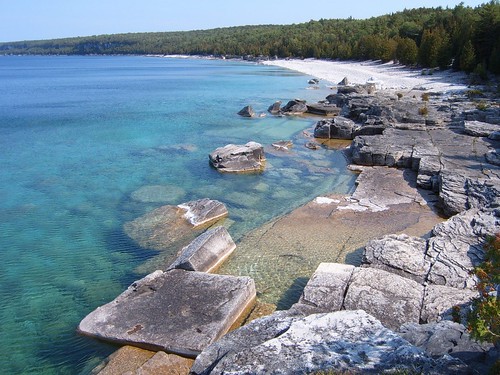Dr. Robert M. Schoch is a tenured associate professor of science and mathematics at Boston University's College of General Studies. Trained as a geologist (Ph.D. in geology and geophysics from Yale University), Schoch has done field research in the Canadian High Arctic, the western United States, Pakistan, Egypt, and most recently Japan. Dr. Schoch's latest book is entitled Voices of the Rocks: A Scientist Looks at Catastrophes and Ancient Civilizations (coauthored with Robert Aquinas McNally; Harmony, Crown Publishing Group, Random House Inc., 1999, ISBN 0-609-60369-8). In Voices of the Rocks Dr. Schoch discusses, among other things, his work on the Yonaguni Monument of Japan, the redating of the Great Sphinx, and a new interpretation of ancient history.]
For many decades, indeed for centuries and even millennia, various researchers and writers have searched for the truth behind Plato's lost continent of Atlantis (usually, but not always, considered to have been located in either the Mediterranean Sea or in the Atlantic Ocean), or for the presumed sister continent of Atlantis in the Indian or Pacific Ocean, referred to variously as Mu or Lemuria. By a literal interpretation of Plato's chronology, Atlantis was destroyed cataclysmically around 9500-9600 B.C., and the supposed civilization of Mu is thought to have been even older. Now remains that are considered by some people to be tangible evidence of a lost, highly sophisticated, and very ancient civilization have been located in the Okinawa area under the sea. Could this be Mu or Lemuria?
The structures that have been discovered thus far are all located off the coasts of Okinawa and various islands of the Ryukyu Island chain, Japan. The best publicized and most spectacular of these structures is one located off the southern coast of Yonaguni Island, a small (approximately 10 km by 4 km) Japanese island located east of Taiwan and west of Ishigaki and Iriomote Islands in the East China Sea.
The structure off the coast of Yonaguni has been hailed as "the world's oldest building" (Barot, 1998), taking the form of a "stone ziggurat" dating back to 8000 B.C. (Barot, 1998). If this is actually the case, this could prove to be one of the most important archaeological discoveries of the last fifty years. In order to evaluate the site, I have visited Yonaguni on two separate occasions (in September 1997 at the invitation of the Japanese businessman Mr. Yasuo Watanabe and during July-August 1998 as a member of the "Team Atlantis" underwater archaeological project). On each trip I made several dives on the site...
Yonaguni Enigmatic Underwater Monuments Robert M. Schoch



